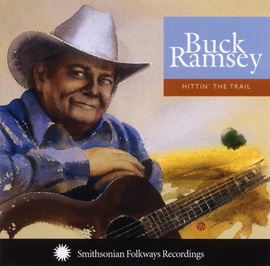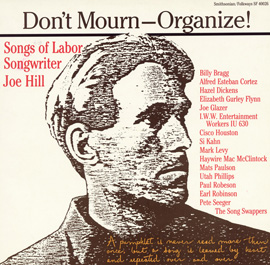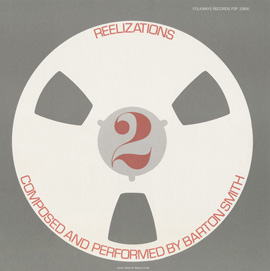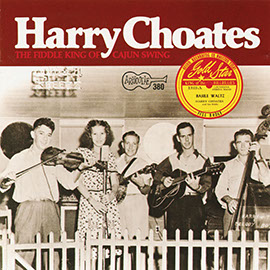Summary
This set of lessons is an introduction to African-American music in Alabama through children’s songs of the 1950s as well as freedom songs of the 1960s. In addition to attentive listening, students will sing, play instruments, improvise, move, and play games.
Suggested Grade Levels: 3–5
Country: USA
Region: Alabama
Culture Group: African American
Genre: Children’s songs, freedom songs
Instruments: Singing, rhythmic movement, Orff instruments
Language: English
Co-Curricular Areas: Social studies
National Standards: 1, 2, 3, 6, 7, 8, 9
Prerequisites: No prior experience necessary, but prior experiences in feeling steady beat and singing will be helpful.
Objectives:
- Students will be able to sing and play four songs from African-American children’s repertoire of the 1950s and 1960s (“May Go ’Round the Needle,” “Ain’t Gonna Let Nobody Turn Me Round,” “Stoopin’ on the Window,” “Berlin Wall”)
- Students will be able to play two rhythmic games (“May Go ’Round the Needle,” “Ain’t Gonna Let Nobody Turn Me Round”).
- Students will be able to compare and contrast African-American children’s play-songs and freedom songs.
- Students will be able to identify and describe the cultural context of African-American freedom songs.
- Students will be able to perform the melody of “Berlin Wall” on Orff instruments.
- Students will be able to perform or arrange a simple accompaniment for “Berlin Wall” on Orff instruments.
- Students will be able to improvise a melody based on “Berlin Wall” on Orff instruments.
Material:
- Recordings from Smithsonian Folkways website:
- “May Go ’Round the Needle”
- “Ain’t Gonna Let Nobody Turn Me Round”
- “Stoopin’ on the Window”
- “Berlin Wall”
- Map of Alabama
- Images of civil right movement (e.g., Whites-Only Bathroom, George Wallace)
- Orff barred instruments
Lesson Segments:
- “May Go ’Round the Needle” (National Standards 1, 3, 6, 7)
- “Ain’t Gonna Let Nobody Turn Me Round” (National Standards 1, 6, 7, 8, 9)
- “Stoopin’ on the Window” (National Standards 1, 3, 6, 7)
- “Berlin Wall” (National Standards 1, 2, 3, 6, 7, 8, 9)
Lesson 1: “May Go ’Round The Needle”: An Introduction to African-American Songs in Alabama

“May Go 'Round the Needle”
from Ring Games: Line Games and Play Party Songs of Alabama (1953) | FW07004
- Introduce the Song: “May Go ’Round the Needle”
- Teacher asks the following questions, and then listens to the recording:
- Where in the world do you think the music is from? (United States, Alabama)
- Who do you think is singing? How old do you think they are? (Children)
- What do you think they’re doing? (Playing a game)
- Listen to “May Go ’Round the Needle”
- Teacher reviews answers and shows students a map of Alabama. The teacher should inform the students that this song was recorded in the early 1950s, nearly sixty-five years ago.
- Teacher informs students that the song is an example of a call-and-response form, where the leader sings a line of the song and everyone responds to them. In this listen, have students identify the words of the response (see transcription).
- Listen to the song again.
- Teacher leads singing of the song by singing the call, students singing the response.
- Teacher leads the students in singing the song along with the recording.
-
After a successful performance with the recording, teacher teaches the call part to the students through an echo process, posting the words:
May go ’round the needle
My silver thimble
Hey Dolores
Fly way, cross yonder
And look this way. - Learning to Perform Body Percussion with the Song
- Teacher instructs students how to add body percussion to the song: hit left thigh, clap, hit right thigh, clap (see transcription).
- Students practice body percussion while teacher sings the song.
- Students practice singing the response while performing the body percussion.
- Teacher splits class in half (one half singing the call, the other half singing the response) and perform with the recording. Switch parts.
- The teacher at this point should explain that the words are nonsensical as it’s a game (if they haven’t already).
- The teacher has several options to practice singing the lead part:
- Singing with the recording again
- Have students sing the lead and the teacher sings the response
- Half the students sing the lead, half sing the response
- Select a volunteer to sing the lead, the rest of the class sings the response

- Playing the Game
- The class stands in two lines facing each other with the leader (the teacher to start) sings the call part and puts someone’s name instead of “Dolores.” On the lines, “Fly way, cross over/ And look this way,” the called student walks from their line to the other line, while marching on the beat. The leader then calls on someone from that line, so that the lines remain equal in size. The game can go until everyone’s name is called.
- After the rules are learned and a few rounds have been played, the teacher can then ask for volunteers to take the leader’s spot (and the teacher can take the student’s spot).
- Alternate game: after learning the basic rules of the game, the teacher can select two students to be line leaders and face away, where they cannot see who is in their line. The students can scramble into either line (making equal lines). The line leaders then can take turns singing the call, and guess students who are not in their line (because they cannot see them) to join their line. After several bouts back and forth, the teacher can end the song. The winner is student whose line that has the most people in it. This is not a traditional version of the game, but could be used to keep interest in the activity.
- Alternate game: have students come up with rules to make the game their own.
Assessment: The teacher can assess singing and rhythmic performance during the game. The following can be used to describe performances:
- Emerging – Students are participating, but inconsistent in keeping the body percussion ostinato.
- Proficient – Students are maintaining the body percussion ostinato consistently and are singing the response at the appropriate time.
- Excelling – Student are maintaining consistent steady beat in body percussion, sing the response at the appropriate time, as well as singing the lead part with fairly accurate pitch.
Lesson 2: “Ain’t Gonna Let Nobody Turn Me ’Round”: Civil Rights in Alabama
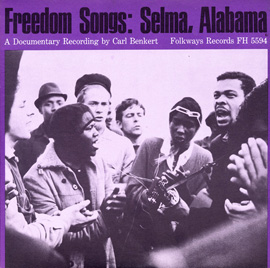
“Ain't Gonna Let Nobody Turn Me Round”
from Freedom Songs: Selma, Alabama (1965) | FW05594
- Review the song from Lesson 1, “May Go ’Round the Needle,” by playing the recording, singing the song with the students, or playing the game.
- After the teacher reviews where the song originated (Alabama) and when the song was recorded (1950s), the teacher asks students to listen for similarities and differences in the next recording that also comes from the same area but in the 1960s.
- Teacher plays the song “Ain’t Gonna Let Nobody Turn Me Round”
- After the entire track has played, the teacher should lead the students in describing the similarities and differences. On a board in front of the students, it may be helpful to have a large Venn diagram with the names of the songs in the circles for the discussion, or possibly columns titled “Same” and “Different.”
- Similarities: both sung by children, unaccompanied, there is a leader facilitating the song, a lot of repetition
- Differences: no clapping, not call-and-response (although there is a leader), doesn’t sound like a game, not as lively, may sound sad to some students.
- Provide context of civil rights movement:
- Broader issue of unfairness: “This song is not used to play a game. This song is what we call a ‘Freedom Song’ and was used in the African-American Civil Rights Movement. But before we get to that, I want you to silently think about a time when you felt you were being treated unfairly, a time when you thought people were treating you differently than everyone else.” (pause) “Turn to your neighbor, in pairs, and share with your neighbor how that made you feel or what caused you to feel that way. If you don’t want to share with your neighbor, that’s okay.” Give a minute or two for students to share with their partner. After pairs have had time to share, ask for volunteers to describe how it felt to be treated unfairly. Allow two or three to discuss their answers.
- Information on segregation: “Not so very long ago in this country, people with different skin color were treated differently. There were restaurants, schools, hospitals, and stores that only white people could go into. There were even separate bathrooms and water fountains for white people and black people. (Show a picture of whites-only bathroom found online.) During this time, in the southeast of the United States, where Alabama is located, there were many African-Americans who decided they no longer wanted to be treated differently. They wanted the government to treat them the same way as other people. They wanted to have equal voting rights. They wanted to be able to go to the same schools. They wanted to have the same freedoms as their white neighbors. The journey for freedom is what we now call the civil rights movement. One of the leaders of the civil rights movement is someone you probably know, Martin Luther King, Jr. Let’s stop right there for a moment, and listen to the song again. As we listen, listen to the words and how they relate to what was going on during this time.”
- Play track again.
- Information on civil rights movement: “African-Americans wanted to be treated more fairly in this country, so they held demonstrations, marches, and other protests to let people know that they wanted to be treated differently and wanted the same rights. While African-Americans campaigned for change, there were other people who were afraid of change. They liked things how they were and worried about things changing too quickly. They didn’t feel everyone should be treated equally, and some of these people had powerful positions. For instance, the police chief in Birmingham, Alabama, Bull Connor, tried to scare demonstrators away by using water hoses against them or brought ferocious dogs close to them. Sometimes tear gas was used against the peaceful demonstrators. So it was a very scary time for the people who were fighting for freedom.”
- “Let’s look at the words of the song:
Ain’t gonna let nobody turn me ’round, turn me ’round, turn me ’round.
Ain’t gonna let nobody turn me ’round, I’m gonna keep on a walkin’,
Keep on a talkin’, marchin’ up to Freedomland.
Ain’t gonna let no tear gas…
Ain’t gonna let no horses…
Ain’t gonna let George Wallace…

This song is a way for the singers to build courage. The song lists the things that are opposing them in their fight for freedom. George Wallace was the governor of Alabama at the time; he is very famous for his stance on segregation; he believed that whites and blacks should always be separated. George Wallace was mentioned in the song because he was in opposition of the demonstrators.”
- The students should have several more opportunities to listen to the song, with the teacher inviting them to hum or sing with the singers.
Assessment: At the end of the lesson, students can fill out the following exit slip:

Lesson 3: “Stoopin’ on the Window”
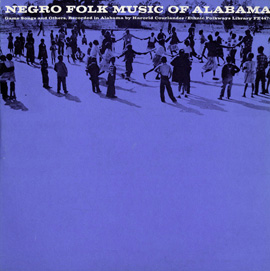
“Stooping on the Window”
from Negro Folk Music of Alabama, Vol. 6: Ring Game Songs and Others (1955) | FW04474
- “Stoopin’ on the Window” is another song game that was collected from an African-American schoolhouse in Alabama during the 1950s.
- Teaching the song:
- Students listen to the recording, deciding whether they think it sounds modern or old-fashioned.
- Students listen to the recording, then try to identify where it is from; after brainstorming, the teacher tells that the song is from Alabama.
- While the recording plays, the teacher instructs the students to listen for the repeated words that are sung by the group (“Wind that ball,” “Again, again, again”).
- The teacher then leads the songs with the students singing the response (see transcription).
-
The teacher then teachers the call part of the song through an echo technique; the words posted in the room:
Stoopin’ on the window (wind the ball) x 3
Let’s wind this ball (again, again, again) x 3
Unwind this ball (again, again, again ) x 3 - The teacher then splits the class in half, with one half singing the call and the other half singing the response. Then allow the groups to switch parts.
- Playing the game:
- The liner notes from the Folkways Recording indicate this game involves the children holding hands (not clapping as it sounds on the recording; they were likely singing the song for the archivist). The leader is at the head of the line and leads the group in walking in a circle on the beat. As the song progresses to the line “Let’s wind this ball,” the leader should make circle smaller and smaller by getting closer to the center of the space. At the line “Unwind this ball,” the leader changes direction, unraveling the entanglement. When the group is back to one big circle, the game has ended.
- When first playing the game, it is likely the teacher will need to be the leader, in order to maneuver the change of direction.
- An alternate way to play the game would be to have the leader move the students around the room, without getting into a knot in the center.
Assessment: The teacher can assess singing and rhythmic performance during the game. The following can be used to describe performances:
- Emerging – Students are participating but inconsistent in keeping steady beat.
- Proficient – Students are maintaining consistent steady beat in movement and are singing the response at the appropriate time.
- Excelling – Student are maintaining consistent steady beat in movement, sing the response at the appropriate time, as well as singing the lead part with fairly accurate pitch.

Lesson 4: “Berlin Wall”

“Berlin Wall”
from Freedom Songs: Selma, Alabama (1965) | FW05594
- Background: The song “Berlin Wall” is another song from the civil rights movement that was collected in Alabama in 1965. The liner notes from the recording describe the events surrounding this song. Civil rights marchers had planned to march from Selma to Montgomery to demonstrate against segregation. Local police had barricaded the march route. Freedom songs were sung at the site of the barricade to persuade the local authorities to remove the obstacles.
- The teacher can introduce the song by giving the cultural context and the history. Even though the song is titled “Berlin Wall,” the words do not contain Berlin Wall, so it may not be necessary to discuss the connection with the Cold War and the segmentation of Berlin.
- During the first listen, the teacher should ask students to listen for similarities between this song and the others they have heard in this unit (clapping, repetitive, leader facilitating the song; also, the students may note that the melody is almost identical to “Ain’t Gonna let Nobody Turn Me ’Round”). The teacher can also ask the students to show the steady beat by tapping on their knees.
- The teacher should display the words to “Berlin Wall”:
We’re gonna stay here ’til it fall, ’til it fall, ’til it fall
We’re gonna stay here ’til it fall in Selma, Alabama
Hate is the thing that built that wall…
Love is the thing that’ll make it fall…
We’re gonna stand here here ’til it fall… - After a listen or two, the teacher should have the students try to sing it with the recording.
- The teacher should then hum the last two measures of the song (mi – re – do – ti – la) and ask: If the first note is mi, can you sing it on the solfege?” (mi – re – do – ti –la)
- After the students have successfully decoded the solfege for the last measures, the teacher can acknowledge that the song is in a minor mode, and that the entire song can be sung or played with just those five notes.
- The teacher should then show the notation of the arrangement of the song and have student move to Orff barred instruments.
- The students should try the melody line on their own instrument.
- The teacher then brings their attention to the simple accompaniment (i – i – iv – i) and allows them to attempt to play the accompaniment on their instrument.
- Once the group can play the accompaniment, the students (or half of the class) should play the accompaniment while singing the first verse.
- All students should have the opportunity to play the melody, accompaniment, and sing.

- Once the students can perform these tasks competently, the teacher can allow time for students to explore with improvisation. All the students can maintain the accompaniment parts while one student at a time is allowed to improvise.
- Culminating performance: at the end of the lesson segment, the teacher can create a formalized order for a performance such as identifying students to play the accompaniment, the melody, and improvisations in a middle section.
Assessment: An exit slip is provided to inform the teacher what students believe their areas of strength and weakness are. This can easily be adapted to an assessment where the teacher assesses one or all of the listed tasks.
Student Voice/Student Self Assessment:
Name _____________________ EXIT SLIP
After today’s class:
I can sing the song Really well Almost Not at all
I can play the melody Really well Almost Not at all
I can play the accompaniment Really well Almost Not at all
I can improvise a melody Really well Almost Not at all


